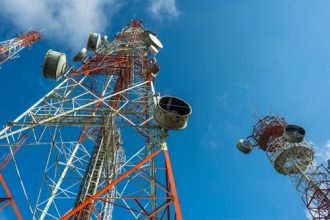December 10, 2013
Board Agrees that Petition Failed to Set Forth Relevant Claim Construction, But Finds Error Harmless
Challenging a patent previously challenged in another inter partes review (IPR2013-00092), Avaya convinced the Board that claims 6 and 9 of a Network-1 Security Solutions patent should be placed into a trial for inter partes review in a case styled as Avaya, Inc. v. Network-1 Security Solutions (IPR2013-00071), involving U.S. Pat. No. 6,218,930. In the co-pending matter, claims 6, 8, and 9 were not placed in an inter partes review trial, the Board finding in the -00092 matter that petitioners had not upheld their burden of proof.
The ‘930 patent relates to “the powering of 10/100 Ethernet compatible equipment,” and more specifically, “automatically determining if remote equipment is capable of remote power feed.” Further, the patent states that, “if it is determined that the remote equipment is able to accept power remotely then [power will be provided] in a non-intrusive way.”
The claim construction portion of the Board’s decision was identical to that contained in its decision rendered in the -00092 decision, linked above. After detailing the four claim construction issues in this proceeding, the Board turned to Patent Owner’s contention that the petition should be denied for failure to comply with 37 CFR § 42.104(b), which requires a petition to set forth how a challenged claim should be construed and how the construed claim is unpatentable. The Board agreed with Patent Owner that at least one term should have been addressed in the petition, but did not deny the petition on that ground. Instead, found that such failure was harmless because Patent Owner did not identify any reason why it could not respond to the grounds of unpatentability because of the deficiency.
Following this preliminary matter, the Board analyzed the grounds for unpatentability set forth by petitioner. Of interest in these grounds was Patent Owner’s argument that one of the prior art references could not be invalidating because that reference was assigned to Cisco Technology, Inc. and Cisco previously settled litigation with Patent Owner. Per Patent Owner, Cisco “would not have licensed the ’930 patent for this amount if they believed that the ’930 patent was invalid in light of” the prior art. Order at 21. The Board quickly dispatched this argument, finding that speculation as to Cisco’s views regarding unpatentabilty were not relevant to the Board’s analysis.
In summary, Patent Challenger succeeded where other defendants to the ’930 patent had previously failed and successfully placed 2 claims of the ’930 patent into an inter partes review trial.



































